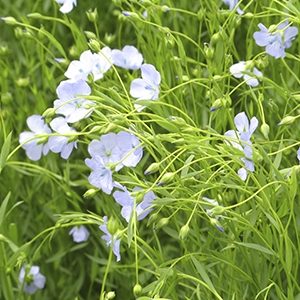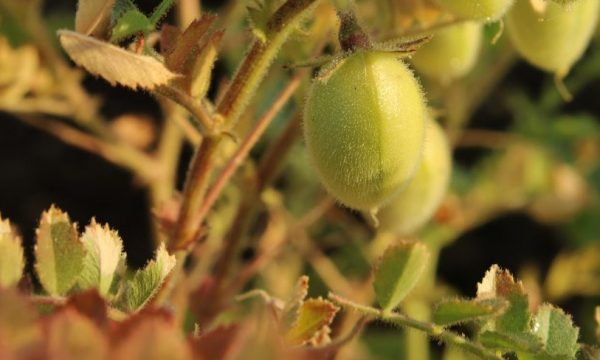Press release Flax cultivation gets monitoring tool based on satellite imagery

Inagro, ILVO and VITO are working together on a digital visual monitoring tool for flax growers. This tool will provide them with remote information about the crop condition of their flax and advise them about the optimal sowing time, possible re-sowing and the use of inhibitors for a homogeneous crop growth. This is being done at the request of the sector, which wants to make the (travel) time of flax growers for crop monitoring on the widely scattered plots manageable again.
The monitoring tool will be available through the existing WatchITgrow web platform and will mainly use free satellite imagery. This is the objective of the VLAIO LA trajectory Flaxsense 2.0, which starts in October. Jan Sijnave, director of the General Belgian Flax Association: "This trajectory should prepare our sector for a sustainable future in which growers will not only make decisions based on gut feeling and experience, but also - and above all - on up-to-date and objective data."
Flax monitoring is a time-consuming task
As a crop, flax places little pressure on the environment because it requires little fertilization and has a positive impact on later crops and biodiversity. Flax thrives best on fertile soils and can only be grown on the same plot every six to eight years. As a result, flax growers are forced to spread their plots throughout the loam and sandy loam region of Europe, from northern France through Belgium to the Netherlands. In order to follow up their crops, they have to travel several days a week. And monitoring is important, because flax is a crop with a short growing season that reacts quickly to heterogeneity in the soil, for example.
Jan Sijnave, director of the General Belgian Flax Association: "Our sector has everything to gain from a system that makes remote cultivation monitoring possible, with a good warning system that facilitates fast, accurate cultivation decisions." Just that is what Inagro, ILVO and VITO want to achieve. "Such a system should mainly show which plots show anomalous and/or heterogeneous growth, so that the flailer can still intervene in time," clarifies Lies Willaert of Inagro. "In addition, the tool will predict the optimal sowing time and where the growth of the crop should or should not be inhibited. After all, flailers want a homogeneous crop with good fiber quality. For this, the crop must grow evenly and, above all, not too fast."
Satellite imagery to support management
An earlier study (Inagro-ILVO) in close cooperation with a handful of flax growers showed that satellite images provide a good indication of crop growth in the field. In order to be able to link useful cultivation advice to this, ILVO will calibrate and validate an existing flax growth model in the new LA project Flaxsense 2.0, which starts in October. To this end, Inagro and ILVO will annually draw data from some twenty practical plots that they will monitor both from the ground and with satellite images.
In addition, Inagro and ILVO will set up specific tests to investigate the difference in growth between the varieties and to measure the impact of a growth regulator on the growth of the flax. Those trials will also be monitored with drones. "With that data, we will set up a decision support tool around the braking of the flax, so that flax growers can make informed decisions about whether braking is necessary or not (spot on)," says Jonathan Van Beek of ILVO. "Through the use of soil moisture maps and satellite images, in combination with weather forecasts, we also want to draw up advice on the ideal sowing time."
Tool with growth potential
As soon as the model has been finalized, the satellite images and the associated crop advice will be made accessible to flax growers via a digital flax tool. This will have a place in the web platform WatchITgrow, which VITO developed earlier. "WatchITgrow is an independent online information platform, originally developed for the potato sector. The platform assists farmers in monitoring numerous crops smoothly and efficiently using satellite data, soil and weather data and many other data," adds Jürgen Decloedt of VITO.
The platform foresees that task maps can be created (for variable planting, fertilization, irrigation,...) and that the modern farmer can store crop data digitally. "Thanks to the Flaxsense 2.0 LA trajectory, we can extend WatchITgrow with the new growth model for flax, and thus meet the specific needs and challenges of the flax sector," they say.
It is worth noting that the tool is being developed at the explicit request of and with the sector. The flax association (ABV) sees growth potential in the tool and recognizes that it is a good time to invest in it, now that a rejuvenation is underway among the flax growers. Jan Sijnave of ABV: "In time we will be able to compare the growth of the crops on the plots with optimal growth, and work out a benchmark for the sector. The more datasets that can feed the platform, the better it will become. For the new generation of flax growers who want to further engage in risk diversification and sustainability, this is important."


